I am very embarrassed as I am writing this.
A few months ago, while chatting with Gianna and Chuck on Slack, I realized something. I have never tasted Alfredo sauce. Not even once.
I didn’t think it was a big deal. I knew what it was and I read about it, but I just never had to curiosity to try it. After all, neither my relatives nor close friends ever did, and I never saw anyone from my town use it or talk about it.
And then it occurred to me: how weird is that!
I mean, Rome is a three-hour drive from here, and yet it’s like this sauce doesn’t exist for us. And I don’t think it’s a regional thing.
Sure, Italy’s main food blogs talk about it, but my impression is that, except for cuisine enthusiasts, most ordinary people barely know about it. I’m willing to bet that some don’t even consider it a native Italian recipe.
And to think that it was created in our capital city three decades before Carbonara – a dish we fight over both online and in real life every day!
We are erasing a world-famous Roman recipe from our culture out of sheer disinterest.
With this new perspective, I could not continue to live in ignorance. So I asked Chuck what recipe he is using at Mortadella Head, and I did some research to further my knowledge.
This article is both for you and me. We’ll see two different ways of making Alfredo sauce from scratch, how to improve it when it’s store-bought, and how to store it properly.
Here is everything we should know about this creamy white sauce.
A bit of history
Alfredo sauce is a pasta dressing derived from fettuccine Alfredo, a dish created in Rome by chef Alfredo di Lelio.
If we want to be picky, it seems that the use of dressing fettuccine with an emulsion of butter and parmesan cheese (oops, spoiler) was a centuries-old Roman tradition that had been lost during history. However, Alfredo deserves credit for bringing it back to life and making it famous.
Legend has it that he created the first fettuccine Alfredo to provide nourishment for his wife, who was expecting a baby and had lost her appetite.
This was confirmed by Ines di Lelio, Alfredo’s granddaughter, who told Mortadella Head the full story some time ago. We transcribed it in our post “Easy Meatballs & Alfredo Sauce.”

Later on, an American customer liked Alfredo’s fettuccine so much that he begged him to include it as a regular course on his menu.
With time and word of mouth, Alfredo’s restaurant became famous among American tourists passing through Rome. This culminated in 1927 with the visit of famous actors Mary Pickford and Douglas Fairbanks, who gave Alfredo a golden fork and spoon in gratitude for his hospitality.
Now, the sauce used to season fettuccine Alfredo has become a recipe in its own right. It often involves some extra ingredients, and can be used to make so many dishes! Not only pasta, but also appetizers, white pizza, sandwiches, and some meat dishes.
Let’s see how it works.
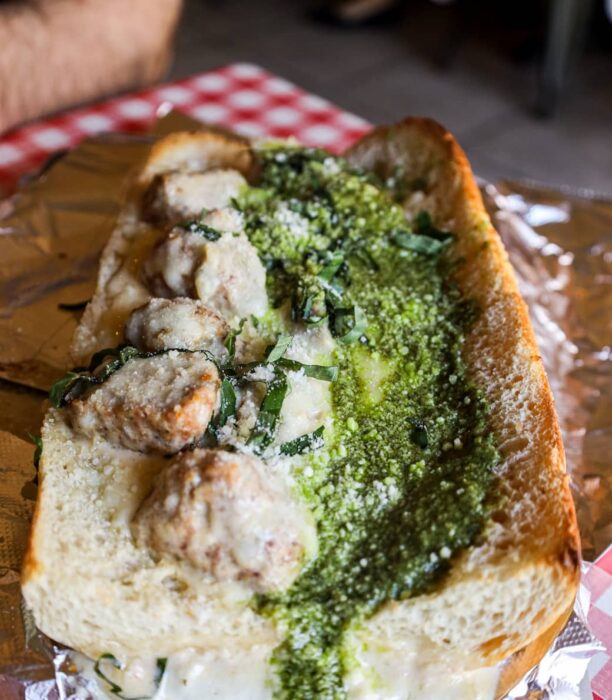
How the original Alfredo sauce was made
The traditional Alfredo sauce recipe, the one that Mr. di Lelio used for his fettuccine, is made with just ½ lb of butter and ½ lb of grated parmesan cheese. Simple and effective.
The complete fettuccine Alfredo recipe is as follows:
- boil 1 lb of fettuccine pasta in salted water until al dente;
- melt the butter in a non-stick skillet or saucepan;
- add the parmesan and stir gently;
Now, of course, such a famous dish was bound to have some variants. And as you may have noticed, THAT’S A LOT OF CHEESE.
So, over the decades, most sellers started using lower amounts of dairy, while chefs and home cooks experimented with some extra ingredients.
This leads us to the next topic.
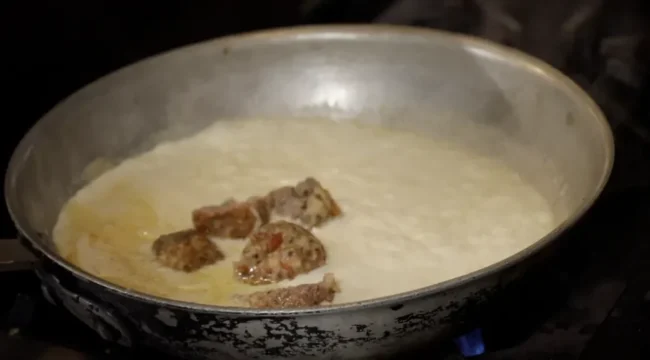
How to make store-bought Alfredo sauce better
If you’re not happy with the jarred alfredo sauce you got from the grocery store, or are looking for extra ingredients to add to the original recipe, there are lots of things that you can do. Here are some ideas.
Milk, heavy cream, or sour cream. Add 1/2 cup of one of these after melting the butter. You will get a creamier texture and a bolder flavor. If you want, you can also add some romano cheese to balance the nutty taste of the other dairy ingredients.
Chicken broth: another way to improve a jar of Alfredo sauce and give it a rich flavor. Add two or three ladles, then let it blend with the sauce until all excess liquid has evaporated. It will give your store-bought sauce a totally different spin. Chicken stock is fine too.
Cooked meat and vegetables: ever heard of chicken Alfredo? This sauce works perfectly with many types of meat (ground beef is another great option) and vegetables. Try a simple mix of chopped chicken, carrots, and sliced Cayenne pepper, or add ground beef browned with onions. Some people also add fresh broccoli, but that’s not among my personal favorites.
Seasonings, spices, and fresh herbs: this is definitely a great way to give your Alfredo sauce a more personal flavor. The most obvious choice is black pepper, but you can also add parsley and thyme, or dried herbs like oregano.
Some people add white wine to the saucepan while cooking – but I am not a fan of this method. The only scenario in which I would use it is when beef is included. I would use a glass of it to simmer the meat with onions, and I would add the rest of the ingredients only when it has evaporated.
Infused oils: I don’t always have them around, but I love infused oils. If you happen to have something like truffle oil, or some basil-flavored olive oil, drizzle two teaspoons over your plate of fettuccine Alfredo just before eating it.
Now that you know all the ways you can improve jarred alfredo sauce, here’s how we make it at Mortadella Head.
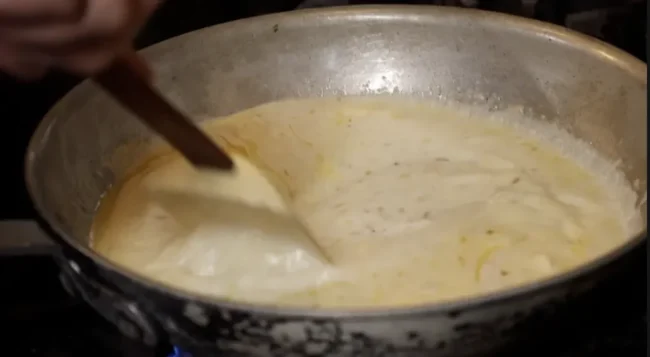
Mortadella Head’s recipe
Compared to the original recipe, we use ½ cup of unsalted butter and 2 cups of grated cheese, and add the following ingredients:
- 4 – 6 chopped garlic cloves – you know the rules, no garlic powder! Get some fresh garlic cloves and chop or grate them;
- 1 + ½ cup heavy whipping cream for extra flavor;
- salt and black pepper to taste.
The method is quite straightforward. All you have to do is melt the butter in a saucepan, then add the garlic and the heavy cream, and cook at a low temperature. When it starts to bubble, toss in the parmesan and the spices, and mix until you get a nice cream.
Here’s a short video if you want to see the whole process.
How to thicken Alfredo sauce
Sometimes it’s not just about what ingredients you add, but also about texture. If you want to improve that, here are a few ingredients that you can toss into the simmering sauce. Just incorporate them over medium heat during the last minutes of cooking and watch your Alfredo sauce become thicker in no time.
The best options are:
- Add more cheese. This is often the easiest way to make a creamy sauce. Any grated, shredded, or cream cheese will do. Toss in 1 or 2 tbsp of pasta water for best results. The starch from the pasta will bond with the dairy content, creating a nice cream that will improve the texture of the sauce.
- Use cornstarch or arrowroot. The process is the same that I showed you in my article on how to thicken marinara sauce. Mix the cornstarch with some cold water to create a smooth slurry, then whisk it into the sauce while cooking over medium-high heat for a few minutes.
- Add all-purpose flour. Another very common thickening agent that will give your Alfredo sauce a creamy texture. But if you ask my opinion, it’s my least favorite.
- Add egg yolks. I do it a lot with tomato or plant-based pasta sauces. However, I feel my doctor would be really mad at me if he saw me doing that with this sauce…
- Cook the pasta directly in the sauce, with 2 or 3 ladles of water. This will make it so that all the starch in the pasta bonds with the dairy content of the sauce. It also helps the pasta absorb all the flavors of the dressing. I use this method when making lemon pasta, or bucatini with cabbage pesto.
How to store Alfredo sauce
Ok, so far we’ve seen how to make creamy Alfredo sauce, and how to improve it when it’s store-bought. Now we just need to learn how to store it.
How long does Alfredo Sauce last in the fridge?
If you’d like to store it in the fridge, you can do it for up to 3 or 4 days at most. So, plan how to use it accordingly. The same goes for opened jars of Alfredo sauce.
On the other hand, if the seal is unopened and the jar is kept in a cold, dry place, most industrial Alfredo sauces can last in the fridge a few weeks past their due date. However, there is no way of telling how long they will actually keep, and sellers always recommend not exceeding the date.
How to tell if Alfredo sauce is bad
We all happen to find an open jar in the refrigerator from time to time and wonder if its contents are still good. If this is the case, and you’re trying to figure out if your leftover Alfredo sauce has gone bad, here are a few things you should look at.
1) The first thing to check is obviously the expiration date. As I was saying, many canned alfredo sauces can last past their due dates. But if you decide to try your luck, pay attention to the other things below.
2) If the jar is open, can you remember how many days have passed since you first used it? Remember, if the seal is removed, alfredo sauce should be consumed within three or four days. And of course, it should be stored in the refrigerator, possibly with the lid closed or in an airtight container if it is homemade. If it’s at room temperature or you can’t remember how long ago you opened the jar, throw it away.
3) Look inside the jar and check these three things:
- Is there mold, or do you notice other changes in texture and color? If yes, throw the whole jar away. Scooping the moldy/discolored parts won’t help.
- How does it smell? If you notice any difference, it means your alfredo sauce has gone bad.
- How does it taste? If there is no mold or bad odor, try tasting a small portion anyway to see if you notice any difference in its flavor.
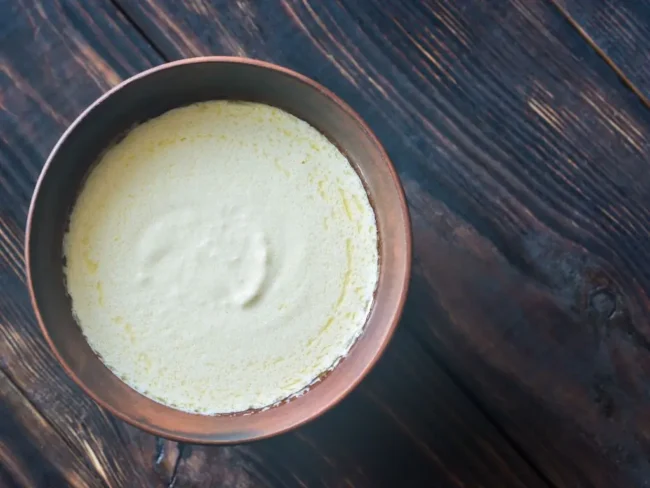
Can you freeze Alfredo sauce?
You can do it – just have a few precautions.
Like any cream-based sauce, Alfredo sauce can separate when frozen. And since it has high water and fat content, it could also take a yellowish color. But don’t worry, it’ll go back to normal once you thaw it properly.
The best way to freeze it is to pour it into a re-sealable freezer bag. To do it, fold the edges of the bag over the rim of a bowl. Then add the sauce, making sure you leave at least an inch of space so that the sauce can expand during freezing. Finally, seal the bag and mark it with the freezing date.
It’s important to do it right after the sauce has cooled down. This way, it’ll remain as fresh as possible.
With this method, you can store your Alfredo sauce for up to 3 months. I’ve read that people use vacuum sealers to make it last for longer, but I’ve never tried this method so I can’t confirm it works.
How do you thaw it?
Finally, here’s how to reheat Alfredo sauce.
If you’ve kept it in the fridge and you’re using it for the main dish, just add it to the pasta and stir well. The heat will be enough.
On the other hand, if you’re using frozen Alfredo sauce, here’s what you should do:
- Let it thaw for several hours out of the fridge.
- Pour it into a saucepan and stir it with a wooden spoon. If it has separated, this will help reincorporate all its ingredients.
- Warm it up, and then use it as usual.
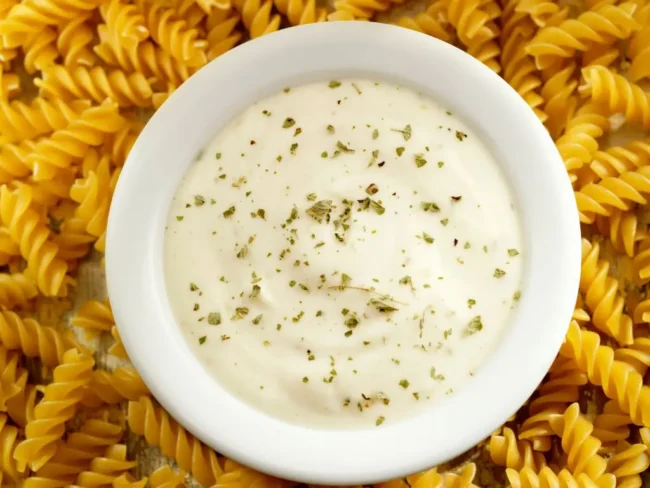
Alfredo Sauce Expert Tips
Making the perfect Alfredo sauce can be an art form, and here are some expert tips to help you elevate your sauce to the next level:
Ingredient Quality Matters
Use High-Quality Parmesan: Opt for high-quality Parmigiano-Reggiano rather than generic Parmesan. The flavor is more intense and will make a noticeable difference in your Alfredo sauce.
Fresh Garlic Over Powder: If your recipe calls for garlic, always opt for fresh garlic cloves rather than garlic powder for a more authentic and robust flavor.
Technique
Low and Slow: Cooking the sauce over low heat helps prevent the dairy from curdling. Take your time to slowly whisk the ingredients together for a smooth texture.
Constant Stirring: Keep the sauce moving to prevent it from sticking to the bottom of the pan or becoming lumpy.
Flavor Boosters
Nutmeg: A pinch of freshly grated nutmeg can elevate the flavors in your Alfredo sauce. However, use it sparingly; a little goes a long way.
White Wine: A splash of a good-quality white wine can add depth and complexity. Make sure to cook off the alcohol by simmering the sauce for a few extra minutes.
Consistency
Starch Water: Before draining your pasta, save a cup of the starchy pasta water. If your sauce becomes too thick, you can use this water to thin it out without diluting the flavor.
Avoid Overcooking: Alfredo sauce thickens as it cools, so aim for a slightly thinner consistency than you want when you remove it from heat.
Pairings and Variations
Protein and Veggies: Consider adding grilled chicken, shrimp, or steamed vegetables like broccoli to create a balanced meal.
Cheese Variations: While Parmesan is traditional, you can experiment with other Italian hard cheeses like Pecorino Romano for a slightly different flavor profile.
Storage
Reheating: If you need to reheat Alfredo sauce, do it over low heat, stirring constantly. You can also add a splash of milk or cream to help bring back its original texture.
Bonus Tip
Season Last: Wait until the sauce is almost done before adding salt. The Parmesan cheese is salty, and as the sauce reduces, it will become saltier. Taste and adjust seasoning just before serving.
What to Serve with Alfredo Sauce
Alfredo sauce is incredibly versatile, and while it’s a star on its own, there are plenty of foods that can share the spotlight with it to make your meal complete. Here are some ideas apart from the usual Pasta:
Proteins
Grilled Chicken: Sliced or diced grilled chicken is a simple yet effective complement.
Shrimp: Whether it’s sautéed, grilled, or steamed, shrimp pairs wonderfully with Alfredo.
Salmon: A grilled or baked salmon filet can sit beautifully on a bed of Alfredo pasta.
Veggies
Steamed Asparagus: The slight bitterness of asparagus can cut through the richness of Alfredo.
Broccoli: Steamed or sautéed, it adds both color and nutrition.
Roasted Red Peppers: These can add sweetness and a pop of color.
Breads
Garlic Bread: A slice of warm, buttery garlic bread feels like a must-have.
Focaccia: This Italian bread with olive oil and herbs complements Alfredo wonderfully.
Sides and Salads
Caesar Salad: The tanginess of Caesar dressing can balance out Alfredo’s richness.
Bruschetta: The acidity from the tomatoes and balsamic can be a nice palate cleanser.
Antipasto Platter: A selection of cured meats, olives, and cheeses can start the meal off right.
Drinks
White Wine: A crisp, dry white wine like Pinot Grigio can cut through the creamy richness.
Sparkling Water: If you’re skipping alcohol, sparkling water with a wedge of lemon or lime is refreshing.
Desserts
Tiramisu: To continue with the Italian theme, a slice of this creamy, coffee-flavored dessert is delightful.
Fruit Sorbet: After a rich meal, a light, fruity sorbet can be a refreshing finish.
Alfredo Sauce FAQs
Q: Can you make Alfredo sauce without cream cheese?
A: Yes, you can. You can use bechamel sauce or a mix of roux and parmesan cheese. I’ll try both recipes and I’ll let you know which one I like more.
Q: Is there a low-sodium version?
A: I’ve found a low-sodium alfredo sauce recipe that has extra-virgin olive oil instead of butter, Trader Joe’s Swiss + Gruyere shredded cheese instead of parmesan, and of course no salt. It looks interesting, I’m going to try it out soon.
Q: What if I want to make it spicy?
A: One would think that you just need to add some red chili peppers. But the dairy fats in butter and parmesan will dissolve most of their capsaicin. So, make sure you use a type of pepper that has 25.000 to 100.000 SHU, like Habanero, Tabasco, or Cayenne. Also, try adding ingredients that don’t rely on capsaicin, like ground white pepper, onions, and herbs. I see some people recommend onion powder too, but I don’t use it, so follow your heart for that.
Q: Can I use milk instead of heavy cream?
A: While heavy cream is traditional, you can use milk for a lighter version. However, the sauce won’t be as rich or creamy, and you may need to use a thickening agent like flour or cornstarch.
Q: Can Alfredo sauce be made in advance?
A: Yes, you can make Alfredo sauce in advance. Store it in an airtight container in the refrigerator for up to 3 days. When reheating, do so over low heat, and consider adding a splash of milk or cream to bring it back to the right consistency.
Q: Why is my Alfredo sauce lumpy?
A: Lumps often occur if the cheese is added to the sauce when it’s too hot, causing it to curdle, or if the cheese isn’t finely grated. Make sure to add the cheese slowly and over low heat, stirring constantly.
Q: How can I make my Alfredo sauce lighter?
A: You can substitute half-and-half or even whole milk for the heavy cream, and use less butter. Some people even use Greek yogurt or cream cheese for a lighter, but still creamy, consistency.
Q: Why did my Alfredo sauce turn out too thick?
A: Alfredo sauce tends to thicken as it cools. If it’s too thick, you can thin it with a bit of reserved pasta water, milk, or cream.
Q: Can I freeze Alfredo sauce?
A: Technically, yes, you can freeze Alfredo sauce, but it’s not recommended as the dairy components may separate when thawed, affecting the texture and flavor. If you must freeze it, be prepared to do some quality control during the reheating process, which may involve adding more cream or cheese.
Q: Can I make Alfredo sauce dairy-free?
A: Yes, there are dairy-free Alfredo recipes that use alternatives like almond milk, cashew cream, or coconut milk, along with nutritional yeast or vegan cheese to mimic the traditional flavors.
Print
Alfredo Sauce: Everything I Should Have Known
- Author: Mortadella Head
Ingredients
- 4 – 6 chopped garlic cloves – you know the rules, no garlic powder! Get some fresh garlic cloves and chop or grate them;
- 1 + ½ cup heavy whipping cream for extra flavor;
- salt and black pepper to taste.
Instructions
The method is quite straightforward. All you have to do is melt the butter in a saucepan, then add the garlic and the heavy cream, and cook at a low temperature. When it starts to bubble, toss in the parmesan and the spices, and mix until you get a nice cream.
Conclusion
So, this was sure a long read, but now we all know:
- the history of fettuccine Alfredo and the pasta sauce that derived from it;
- an easy homemade alfredo sauce recipe, and our special version;
- extra ingredients to improve a store-bought jar of sauce;
- easy ways to thicken alfredo sauce;
- how to store it.
I think this guide is as complete as it can be. I haven’t left much room for the most common variants, but most of the best alfredo sauce recipes are done by experimenting with the methods and ingredients that we’ve seen above. I’ll try more of them soon. If you have your own Alfredo sauce recipe, let me know in the comments!

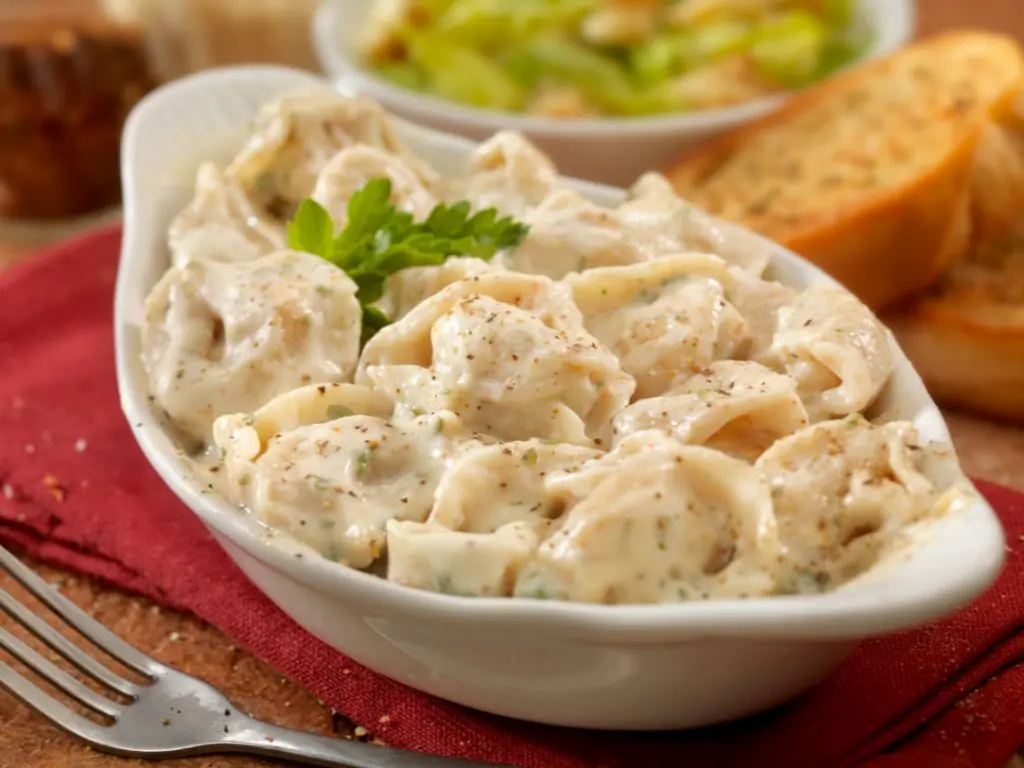



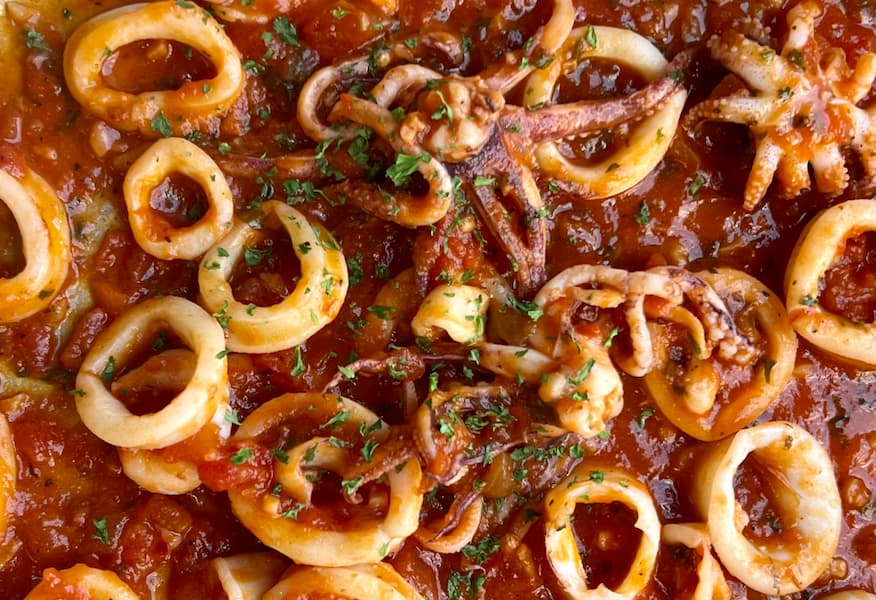
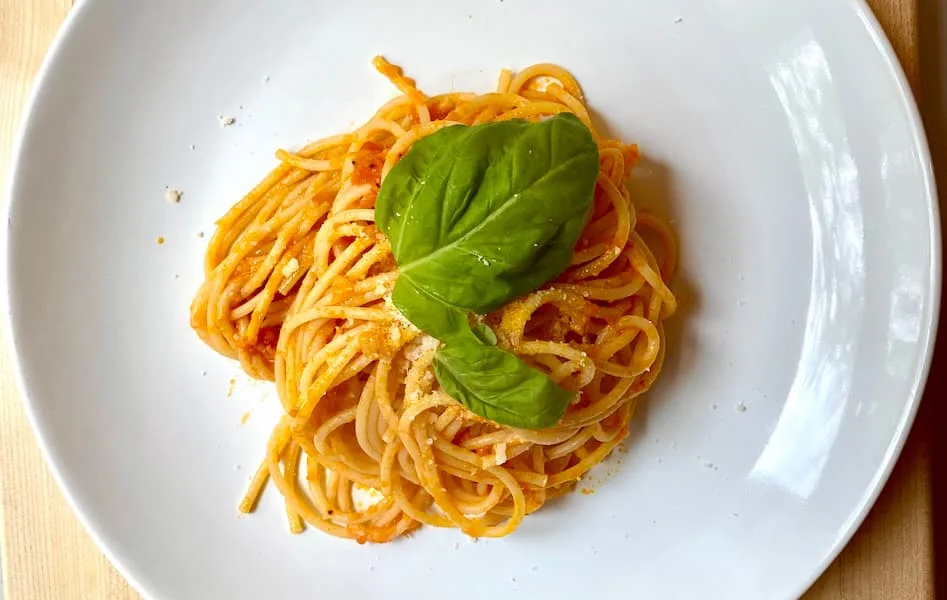
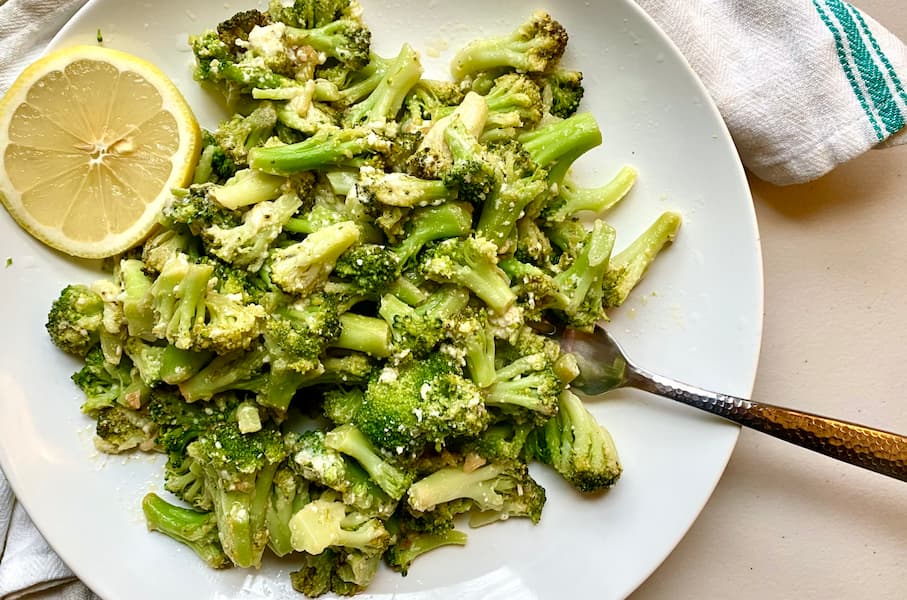

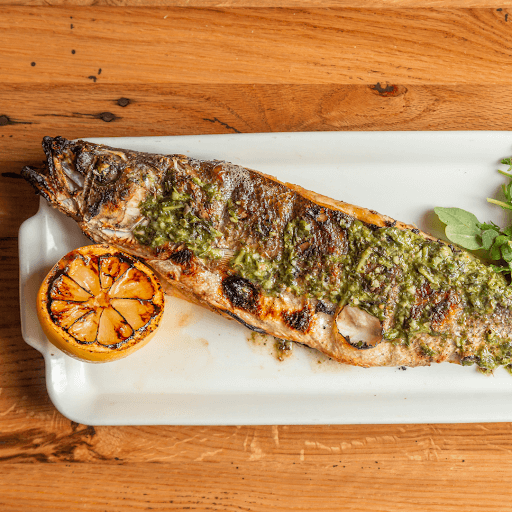
2 thoughts on “Mastering Alfredo Sauce: The Guide You Wish You Had Sooner”
Fettuccine Alfredo sauce recipe
Hi Melvin. Our recipe is shown in the paragraph “Mortadella Head’s recipe”.